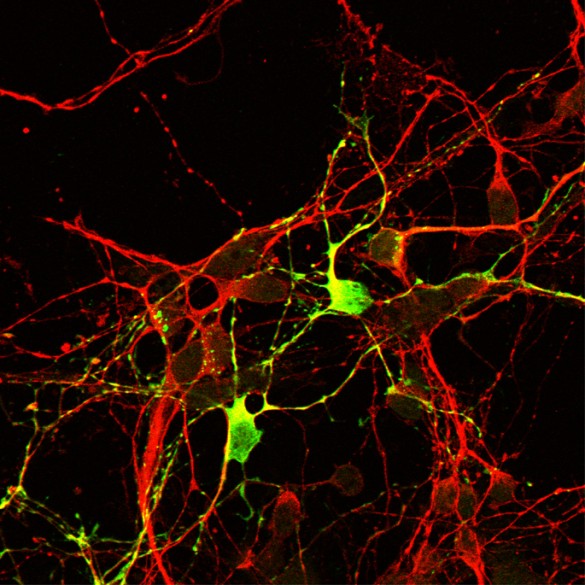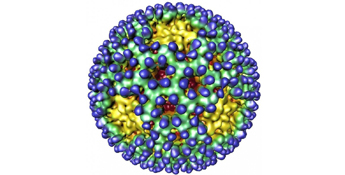
Mammalian reovirus is a neurotropic virus – a virus that causes nervous system infections such as encephalitis. Reovirus uses the host receptor JAM-A to disseminate through the bloodstream, but this receptor is not required for reovirus replication in the nervous system.
Jennifer Konopka-Anstadt, Ph.D., Terence Dermody, M.D., and colleagues have identified the Nogo receptor NgR1 as a neural receptor for reovirus. Expression of NgR1 permits reovirus binding and infection of otherwise non-susceptible cells, and blocking NgR1 on cortical neurons prevents reovirus infection. Surprisingly, the researchers found that reovirus virions use different components of the virus outer coat to bind to JAM-A and NgR1.
This research, reported June 11 in Cell Host & Microbe, provides evidence that multiple receptors are used to facilitate reovirus systemic spread and nervous system infection. Knowledge of these cellular factors is important for developing strategies directed against viruses that cause encephalitis. Since reovirus is also being tested as an anticancer therapeutic, new information about its receptors may facilitate more precise tumor targeting.
This research was supported by grants from the National Institutes of Health (CA009385, AI081486, AI080108, AI038296), an RNAi Discovery Grant from Thermo Fisher Scientific, and the Elizabeth B. Lamb Center for Pediatric Research.
Send suggestions for articles to highlight in Aliquots and any other feedback about the column to aliquots@vanderbilt.edu














